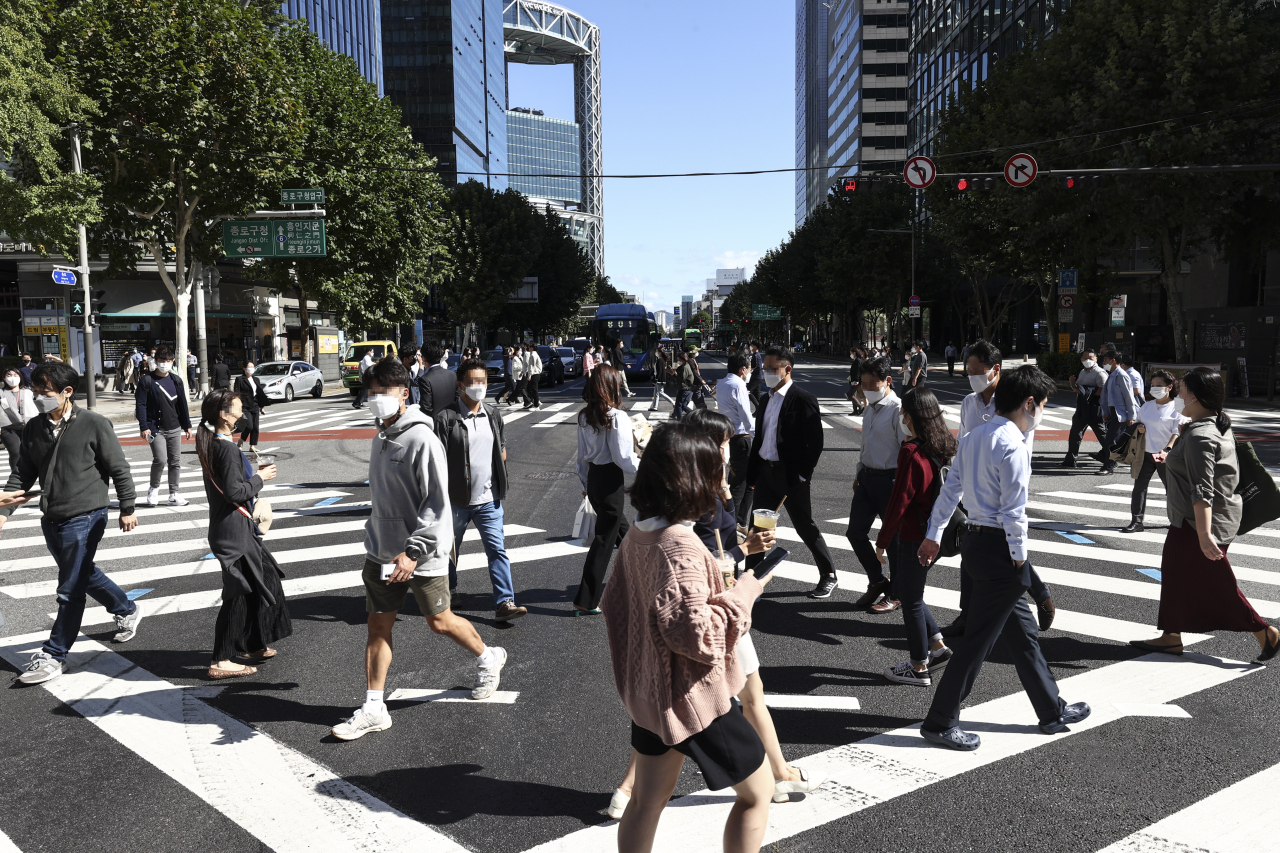South Korea’s economy added the largest number of jobs in more than seven years in September, government data showed Wednesday, with officials citing a surge in contactless services backed by digitalization of industries and high vaccination rate as key catalysts.
The economy added 671,000 jobs on-year to 27.68 million in September, Statistics Korea data showed. This marked the largest job growth since March 2014, when the economy added 726,000 jobs and also the seventh consecutive month of job additions.
“The growth of digitalization and contactless services along with recovery in exports has led to an addition of jobs and decline in unemployment,” Jeong Dong-myeong, a senior official at Statistics Korea, told reporters.
“The latest emergency cash subsidy program and the growing vaccination rate also seems to have worked as positive factors behind the job addition,” he added.
The number of fully vaccinated in people here has surpassed 30 million as of last week, meaning that some 60 percent of the total population have been fully inoculated so far. South Korea has been anticipating the government’s plan to implement its “living with COVID-19” plan as early as November, which would treat the virus like any other influenza in the process of gradually returning to “normal life.”
By sectors, the accommodation and food service sector – which has been dealt with the heaviest blow by the social distancing rules – have reported a shift towards a job gain from two straight months of job loss. It gained 39,000 jobs in September on-year, after reporting job losses of 12,000 and 38,000 in July and August, respectively.
The sector has been affected by the Level 4 social distancing rules adopted on July 12 and covering the greater Seoul area. The strict measures ban private gatherings of three or more people after 6 p.m., but allows partial exception for the fully vaccinated.
The sectors that saw job gains in the cited period included social welfare services which gained 280,000 jobs and transportation and storage businesses which added 163,000 jobs. The education services sector also added 98,000 jobs in the same period.
But not all employers had the capacity to hire more, as some sectors reported job decline.
The wholesale and retail sector shed 122,000 jobs on-year last month, while the manufacturing sector shed 37,000 jobs in the same period. The arts, sports and leisure sector shed 34,000 jobs in the cited period.
The number of unemployed people declined 244,000 on-year to 756,000 in September. The jobless rate dropped 0.9 percentage point on-year to 2.7 percent.
The unemployment rate for those aged between 15 and 29 fell 3.5 percentage points on-year to 5.4 percent.
The number of those who are not seeking jobs shed 132,000 to 16.7 million in the cited period, declining for the seventh consecutive month.
Deputy Prime Minister and Finance Minister Hong Nam-ki called the latest data a “clear recovery” through his Facebook page on Wednesday. “The number of job additions has become a step closer to the pre-COVID level,” he noted.
But the economic policy chief vowed to continue supporting those in need, saying that the number of the self-employed with hiring capabilities and temporary workers have further declined.
Last year, the number of hired people here declined by 220,000, the largest job loss since 1998, when the country was reeling from the 1997 Asian financial crisis.
By Jung Min-kyung (
mkjung@heraldcorp.com)








![[Out of the Shadows] Seoul room clubs offer drugs to compete for clientele](http://res.heraldm.com/phpwas/restmb_idxmake.php?idx=644&simg=/content/image/2024/11/05/20241105050566_0.jpg)